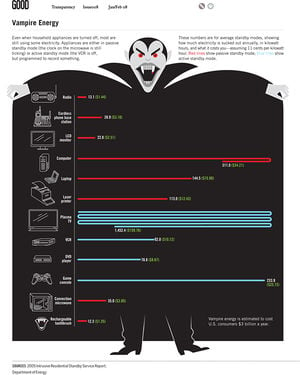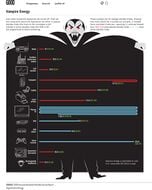
Green computing, or green information technology (IT), refers to environmentally sustainable computing. It is the study and practice of using computing resources efficiently by designing, manufacturing, using, and disposing of computers, servers, and associated subsystems (such as monitors, printers, storage devices, and networking and communication systems) with minimal or no impact on the environment. Green computing strives for economic practicality and improved system performance while satisfying social and ethical responsibilities. Green computing includes the dimensions of environmental sustainability, energy efficiency economics, and total cost of ownership (which includes the cost of disposals and recycling)."[1]
Green computing can be made more sustainable in several ways including:
- Placing the computer in hibernation mode
- Switching the computer screen off instead of using screensavers
- Turning the computer off when it is not in use
Each of these examples can save power. More efficient coding means computers use less power and need less powerful hardware.
Energy-efficient computers[edit | edit source]
The maker of the low cost Inveneo computer claims to use one-sixth as much electricity as a typical personal computer.[1]
Energy Efficient IT Architecture[edit | edit source]
Using low power disk-less thin clients can save considerable power.
One way of doing that with Open Source Software is to use the Linux Terminal Server Project (LTSP) Software.
In their own words "LTSP is an add-on package for Linux that allows you to connect lots of low-powered thin-client terminals to a Linux server. Applications typically run on the server, and accept input and display their output on the thin-client display
10x Desktop computers can use up to 1000watts (100 watts each)
1x LTSP server & 10 thin clients can use less than 500 watts.
One report shows that 12 clients + server consumed less than 480 watts
More technical details on a LTSP set up
On a Ubuntu box: $sudo apt-get install ltsp-manager ltsp-server-standalone
Recycling facts[edit | edit source]
- Computer motherboards contain heavy metals and should not be disposed of with ordinary garbage.
- Recycling of computers in countries, like China, can lead to serious health problems due to inadequate safety measures in handling toxic waste components.
- Companies that recycle computers and electronic goods include SIMS (A scrap metals company that has diversified). and Computer Recycling Environmental Computer Recycling
Queens Green IT[edit | edit source]
The Queen's Applied Sustainability Research Group and the Webster Group of Queen's University are collaborating on a project to improve the energy efficiency of IT/S.
Notes and references[edit | edit source]
- ↑ San Murugesan, "Harnessing Green IT: Principles and Practices," IEEE IT Professional, January-February 2008, pp 24-33.
Other companies use the internet to facilitate direct sale of computers for re use by a second user, for example, http://web.archive.org/web/20191221224654/http://www.sellmylaptopuk.co.uk:80/ and http://www.computer-recycling-and-removals.co.uk/refurbished-used-computers-laptops.htm This results from the rapid turnover of technology development where items are replaced by newer technology before they reach the end of their useful lives.
Related projects[edit | edit source]
See also[edit | edit source]
- Category:Mech425 GreenIT Project
- ICT4D (Information and Communication Technologies For Development)
External links[edit | edit source]
- Wikipedia:Green computing
- Greenlivingpedia:Green computing
- VIA Clean Computing is a commercial site describing several initiatives to make computing more sustainable.

